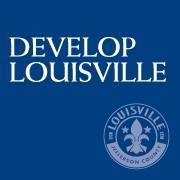 Mayor Fischer has announced today that Develop Louisville’s Office of Advanced Planning will issue a Request For Proposal to create a master plan for Broadway between Shawnee Park and Baxter Avenue. The city is seeking proposals that will transform the corridor, as envisioned by Move Louisville, from its existing auto-centric form into a multi-modal “complete street” designed to enable safe, convenient, and efficient access with a focus on premium transit that will serve as a catalyst for economic development.
Mayor Fischer has announced today that Develop Louisville’s Office of Advanced Planning will issue a Request For Proposal to create a master plan for Broadway between Shawnee Park and Baxter Avenue. The city is seeking proposals that will transform the corridor, as envisioned by Move Louisville, from its existing auto-centric form into a multi-modal “complete street” designed to enable safe, convenient, and efficient access with a focus on premium transit that will serve as a catalyst for economic development.
Move Louisville, the city’s long-range transportation plan, identifies Broadway as one of its 16 priority projects and recommends a complete street retrofit of the corridor. The entire length of Broadway (about six miles) from Shawnee Park to Baxter Avenue will be studied. The objectives for the Broadway master plan are to build upon the five guiding CHASE principles (Connected, Healthy, Authentic, Sustainable, Equitable) established as the framework for Plan 2040, the city’s comprehensive plan.
“From end to end, Broadway is diverse in people, culture, business and landscape. A ride starting at Shawnee Park and ending at Cave Hill Cemetery will offer anyone a remarkable look at Louisville’s diverse neighborhoods,” said Mayor Greg Fischer. “That ride though should be safer for people in cars, in buses, on a bicycle or on foot. The corridor is too car focused and has some of the city’s most dangerous intersections for car and pedestrian crashes. Broadway has tremendous potential for revitalization and economic development. My team envisions a Broadway – the same road Muhammad Ali was paraded down as champion and as icon – that is safer, more vibrant, and full of life along every neighborhood that touches it.”
“Broadway has a large footprint and a long history,” said District 4 Councilwoman Barbara Sexton Smith. “Everyone should feel safe on Broadway from Shawnee Park to the Highlands. I look forward to working together to build a better Broadway, one that is safer, more connected and open for economic development from end to end. Together we can do this.”
What we know today as Broadway was constructed in 1832 and was then named Dunkirk Road. By 1879, the road was 120-feet wide and stretched from the Ohio River to Baxter Avenue. The creation of Shawnee Park has since shortened the road in length. Over the next several decades, a boom in downtown made Broadway a focal point of the central business district. A streetcar line served the entire corridor from 1940 until 1966. It has long served as one of Louisville’s most iconic roadways, connecting Louisville’s eastern and western urban neighborhoods.
Over the past several decades, Broadway has evolved into an auto-centric corridor that is littered with surface parking lots and an under-performing built environment. The current roadway design prioritizes automobiles, promotes high vehicular travel speeds, and has led to unsafe conditions for all users, such as the high pedestrian crash rates near Jefferson Community Technical College and along the western parts of the corridor.
Broadway also provides critical transit access for the Transit Authority of River City (TARC). The #4, #18, and #23 TARC bus routes all offer frequent service along Broadway and give key connections to provide links to other routes for transfers. These three routes account for more than 5 million trips per year, which is about 40 percent of TARC’s ridership.
Despite its current insufficiencies, Broadway is beginning to show signs of revitalization. Numerous planning efforts and development projects that will directly impact the area are completed or are underway, and amplify the need to holistically plan for the corridor. These projects include two multifamily apartment complexes between Barret and Baxter avenues, the Paristown arts and entertainment district, Reimagine 9th Street, Dixie Highway Bus Rapid Transit, the 18th Street realignment, the Republic Bank Foundation YMCA, and the Passport Health Plan campus.
A consultant for the master plan will be selected in early 2019 and community engagement – which will occur in many forms and will involve residents, organizations and venues throughout the entire corridor – will take place through spring and summer 2019. A draft plan is expected to be available for public review in fall 2019, and a final document should be complete in spring 2020.
 Weather
Weather Traffic
Traffic @LouisvilleDispatch
@LouisvilleDispatch @LouisvilleDisp
@LouisvilleDisp Subscribe
Subscribe